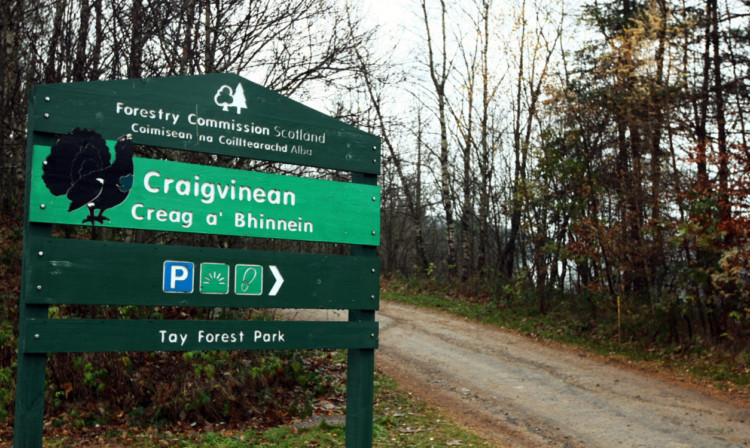The first step towards erecting giant wind turbines next to one of Scotland’s finest beauty spots has been taken in private.
An 80-metre meteorological mast will rise within Perthshire’s Craigvinean Forest as a precursor to plans for what has been called the Tay Forest District Wind Farm Elrick.
The decision to allow the mast to be erected was taken by council officers under delegated powers, with Edinburgh-based PNE Wind UK given two years to assess the site’s suitability for turbines.
Perth and Kinross Council said the issue could be dealt with in such a fashion given the lack of any objection from local residents or statutory consultees.
Dunkeld and Birnam Community Council has described plans to build a windfarm at Craigvinean as “most unwelcome” and is increasingly fearful of the impact of industrialisation upon Highland Perthshire.
The area is already home to the giant Griffin and Calliacher farms. The proposed development has also sparked an outraged response from national campaign group Scotland Against Spin.
Neither, however, chose to object to the mast plan. Such proposals are traditionally granted permission and considered wholly in isolation from the turbine plans that can follow.
The council’s decision does not indicate support for any forthcoming plan and, in fact, elected members have so far rejected every windfarm plan to come before them.
Craigvinean and the adjacent Hermitage attract thousands of visitors each year.
Should it subsequently bring forward its plans for a windfarm at the location, PNE Wind could look to erect as many as 13 giant steel turbines on the Forestry Commission Scotland-owned land, which sits to the northwest of Dunkeld.
Rising 126 metres from ground to blade tip, the industrial towers would be more than twice the height of some of the UK’s tallest trees at the nearby Hermitage, which attracts visitors to see its trees, waterfalls and follies associated with tales of Celtic warrior Ossian.
The turbines could be visible from the site, though they would be erected on an area of forest land that is already seeing significant felling.
In their report on the meteorological mast council officers note: “The principal land use in the area is agriculture and forestry; however there are a number of non-agricultural uses presently operating in and around the surrounding area such as windfarms as well as a scattering of residential properties.
“Whilst the proposed structure is large in terms of its height, met masts are now not uncommon in highland areas, and to this end I consider the proposal to be perfectly compatible with the existing land uses.
“I also note that no representations have been received from any third party or any of the statutory consultees.
“The site is visible from public areas and it’s unlikely that the mast will be screened in its entirety from the public view by existing landform and trees.
“Unlike a wind turbine, however, the proposed mast is temporary and masts of this kind do not have the blunt and harsh visual impact that wind turbines can potentially have in the wrong location.
“There is no doubt that the mast will be visible from some public areas.
“However, I do not consider this mast’s visual impact on the environment to be significant, nor permanent due to the nature of the proposal.”
For more information on the overall plan for turbines in the area, visit www.elrickwindfarm.co.uk.
